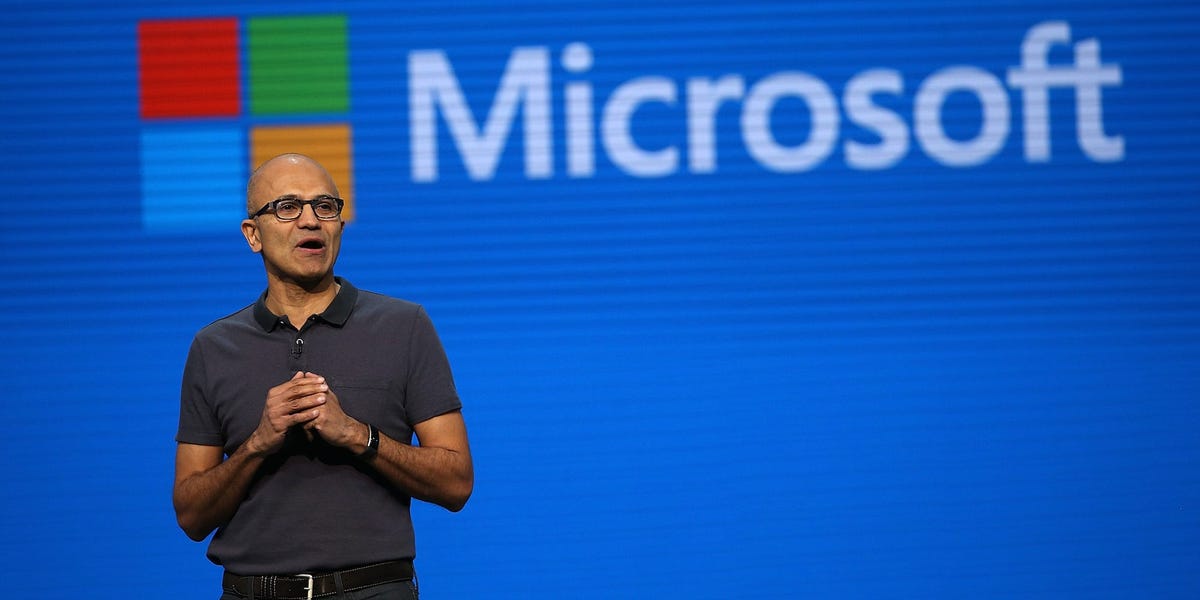- Microsoft CEO Satya Nadella plans to use AI to attract Gen Z users, a new internal memo shows.
- A “relatively low share” of Gen Z users compared to competitors, could be a “long-term risk”.
- The memo was released this week as the FTC sues to block Microsoft’s $70 billion Activision Blizzard deal.
Microsoft knows that it needs more Gen Z and digital-native companies using its workplace products, and is planning to develop AI-based productivity tools to lure younger users away from competitor products, an internal memo released this week shows.
The future of Microsoft’s workplace business, which includes the tech giant’s slate of cloud-based productivity and collaboration software like Teams, Outlook, Office, and Excel will depend on interest from these user groups.
“Our relatively low share in these segments presents a long-term risk to our overall Modern Workplace business,” CEO Satya Nadella wrote in a corporate strategy memo. The memo was sent on June 7, 2022, by Nadella to the company’s board of directors.
The confidential internal memo was briefly published online this week by federal antitrust regulators. The Federal Trade Commission is suing Microsoft in an attempt to block its $70 billion acquisition of Activision Blizzard, and some redacted internal documents used in the legal battle are viewable to the public via the electronic filing system for U.S. federal court documents.
Nadella notes in the memo that Gen Z and digitally-native companies prefer to use “simple, lightweight, and collaboration first applications who scale through freemium business models and bottom-up adoption within companies.”
Microsoft has done some work to ramp up its offerings in those areas, including its 2021 acquisition of Chipclamp, a free video editing tool, and the development of Loop, a collaborative hub meant to compete with Notion, a freemium productivity platform.
But according to Nadella, there is more work to be done if it wants to attract younger consumers who prefer competitor products like Google Workspace.
“We are looking to leverage our AI capabilities to leapfrog competitors in developing next-gen productivity tools, Nadella wrote.
Microsoft has already publicly acknowledged that it is looking to better understand the Gen Z consumer. Last year, the company’s research division released a study on the preferences of Gen Z and Millennial office workers.
Microsoft first launched its suite of workplace software for personal computers, Microsoft Office, in 1990, and became available in the cloud in 2013. Google Docs, Google’s free cloud-based word processor launched in 2006, as the youngest members of Gen Z were finishing elementary school.
Google Docs, which is part of the Google Workspace suite of cloud-based collaboration and productivity tools for businesses — a key competitor to Microsoft’s Modern Workspace business — has developed a reputation for being Gen Z’s preferred word processing platform over Microsoft Word.
“Something interesting I’ve noticed teaching is, Gen Z just does not use Microsoft Word, period. When you ask them to submit files they’re all converting them from Google Docs or Pages,” a Harvard PhD candidate said in a 2021 Twitter post.
Do you work at Microsoft or AWS and have insight or information to share? Contact Ellen Thomas on Signal at 646-847-9416 or [email protected] using a nonwork device.
Read the full article here




